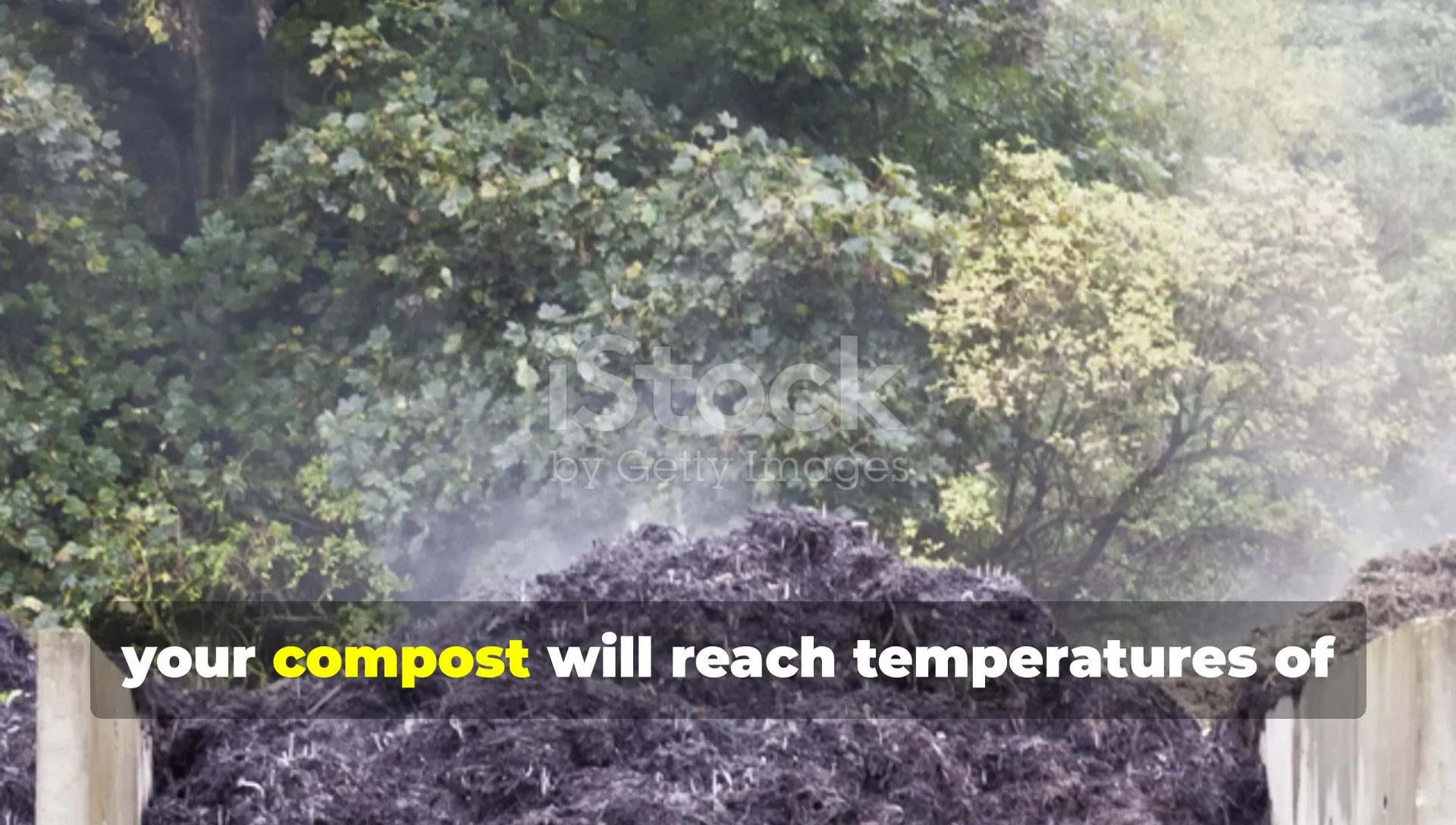Transform wood chips into nutrient-rich compost in weeks, not months, with the accelerated hot composting method. This technique utilizes the power of heat to drastically speed up the decomposition process, resulting in a finished product significantly faster than traditional methods. Forget waiting months for your compost to mature; hot composting leverages thermophilic bacteria to break down organic matter at temperatures ranging from 55 to 70° Celsius (130 to 160° F), killing weed seeds and pathogens in the process. This ensures a safer, healthier compost ideal for enriching your garden soil.This guide details the two-stage process involved, from the initial thermophilic phase where high temperatures accelerate decomposition, to the subsequent fungal maturation stage that further enriches the compost. We'll cover crucial monitoring techniques, including temperature regulation and maintaining the optimal carbon-to-nitrogen ratio. Learn how to source wood chips cost-effectively and how a final fertility boost can supercharge your compost's effectiveness. Prepare to revolutionize your composting efforts and enjoy the benefits of rich, high-quality compost in record time.
Pros And Cons
- Produces finished compost in 3-4 weeks
- Sterilizes the pile, killing weed seeds and pathogens
- Gives a head start on fungal colonization for long-term soil health
- Creates biologically rich soil-enhancing amendment
Read more: 10 Best Commercial Charcoal Grills: A Buyer's Guide
The Power of Hot Composting
Hot composting is a game-changer for turning wood chips into nutrient-rich compost quickly. Unlike traditional methods, this technique leverages heat to drastically speed up the decomposition process. The high temperatures achieved, ranging from 55 to 70° Celsius (130 to 160° F), kill weed seeds and pathogens, resulting in a safer and healthier end product.

This rapid decomposition allows you to produce finished compost in a matter of weeks, not months. The heat also provides a significant head start on fungal colonization, crucial for long-term soil health and fertility. This method is ideal for gardeners overwhelmed with wood chips from tree trimmings or anyone seeking a fast, efficient composting solution.

The Two-Stage Composting Process
Hot composting involves a two-stage process. The first is the thermophilic, or heat-loving, stage. Here, high temperatures accelerate decomposition, quickly breaking down organic matter. Once this stage concludes, the pile cools down and enters the second stage.

In the second stage, fungal spores are introduced to break down the remaining lignin in the wood chips. This slower process enriches the compost with beneficial fungi, resulting in a biologically diverse and nutrient-rich soil amendment after a couple of months.

Boosting Fertility: The Final Step
A month before using the compost, introduce a final fertility booster. This could include seaweed extract, fresh green garden clippings, or even apple pomace. This reactivates microbial activity and injects a final wave of nutrients, supercharging the compost's effect on your garden.

After this final boost, allow the compost to sit for 2 to 3 weeks before applying it. This ensures the nutrients are fully integrated and the compost is ready to enhance your soil's fertility and support thriving plant growth.

Maintaining the Ideal Conditions
Monitoring the temperature is crucial for successful hot composting. Use a compost thermometer to regularly check the pile's internal temperature. A reading of 48°C (118°F) or higher after 24 hours is a good sign.

Maintain a balance of carbon-rich (browns) and nitrogen-rich (greens) materials. If the temperature is too low, add more nitrogen-rich materials and water. If it's too high, add more browns and aerate. Keep the pile consistently moist but not waterlogged. Proper aeration is vital, so turn the pile regularly to ensure optimal oxygen flow.

Sourcing Free Wood Chips
One of the best ways to obtain wood chips is by contacting tree service companies in your area. Many are happy to dispose of their wood chip waste at a convenient location. Offer your yard as a drop-off point, making the process easy and accessible for them.

This mutually beneficial arrangement can provide a consistent supply of wood chips for your composting efforts throughout the seasons, saving you the expense of purchasing materials. A little friendly outreach goes a long way.

A Real-Life Composting Timeline
This method effectively transforms wood chips into rich compost within a relatively short timeframe. In a real-world example, within 24 hours, the internal temperature reached 48°C (118°F). Over the next few days, additional grass clippings were added, maintaining the high temperature and accelerating decomposition.

By day three, the temperature exceeded 60°C (140°F), signaling a successful hot composting process. By day 21, the compost was ready for the fungal maturation phase, which takes approximately one to two months. This is then followed by the final nutrient boost before use.

Conclusion: Fast, Effective Composting
Hot composting provides a significantly faster and more efficient method for transforming wood chips into nutrient-rich compost compared to traditional methods. This technique, through careful management of temperature, moisture and the carbon-nitrogen ratio, produces high-quality compost ready for use in weeks rather than months.

The two-stage process, coupled with the final fertility boost, ensures a biologically diverse and highly effective soil amendment. The method is also cost-effective and environmentally friendly. It’s an excellent solution for gardeners who want to make use of readily available wood chips for their garden.

